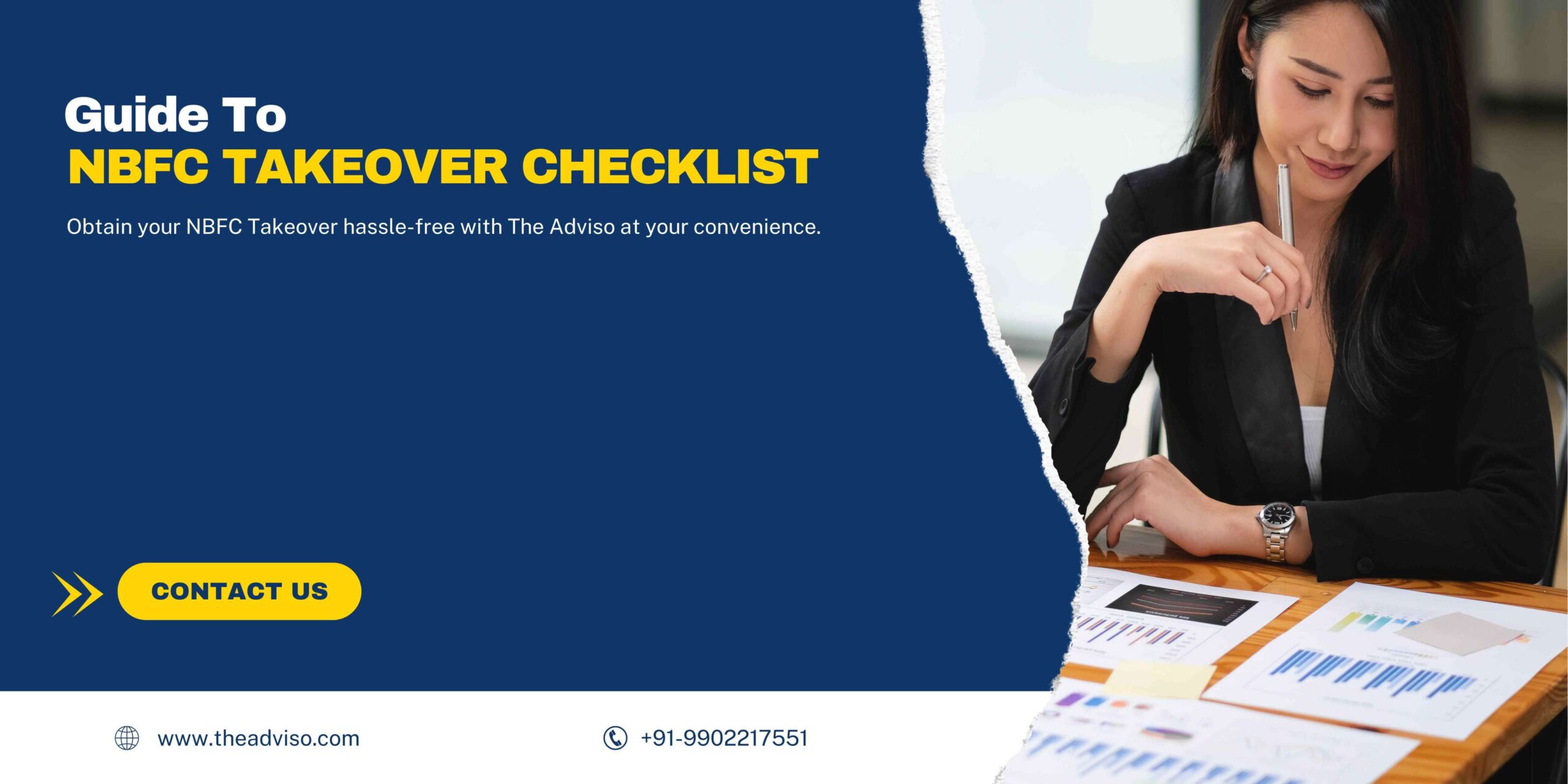NBFC Takeover Checklist
There is an increasing demand for credit across corporate and industrial sectors. Unlike conventional institutions and banks, NBFCs play a more commendable role in upholding this demand with easy credit facilitations. Many businesses plunge into the NBFC regime owing to tremendous growth opportunities but often fail due to stringent RBI processes and norms. Those who experienced such inconvenience can leverage NBFC takeover, which signifies acquiring an already registered NBFC. Legalities around NBFC takeover have been simplified by the Reserve Bank in the past few years. This article covers a comprehensive NBFC takeover checklist, leading to seamless business transactions.
What exactly does the term “NBFC takeover” signify?
An NBFC takeover refers to a business transaction wherein an operational NBFC acquires a 100% stake in an RBI-registered NBFC. The successful takeover leads to the transfer of assets, liabilities, and shares, to the acquirer.
What are the Types of NBFC takeovers?
A NBFC takeover can take place via two methods viz. a friendly takeover and a hostile takeover.
1. Friendly Takeover
As the name suggests, in this setting, the acquiree firm sends a proposal to the acquirer firm, reflecting the intention of being acquired. If the proposal faces the recipient’s approval, a further process can come into effect to complete the transaction.
2. Hostile Takeover
It is a non-amicable type of takeover wherein the acquirer leverages different tactics, forcing another NBFC to accept the takeover proposal.
NBFC Takeover Checklist for Successful Transaction
The section below entails an NBFC Takeover Checklist, explicitly illustrating each step for seamless business transactions.
1. Background Vetting
Before you rush to acquire the concerned NBFC, probe its history, capital structure, management efficiency, etc. This will give you a fair idea about its prevailing financial standing and market reputation.
2. Determine your goals
Pen down your goals, defining what exactly you wish to achieve through the takeover. Let’s say you aim to expand or add a new product to your portfolio, both these goals are distinct and can be achieved through different endeavors, including takeover. Also, take financial implications into account for achieving such goals.
3. Explore the Market
Knowing where the prevailing market stands can influence your decision to take over another NBFC. For example: you may want to delay your takeover decision amid the trembling financial sector. The market condition can make or break the NBFC entities.
4. Know the financial position and stability
Probe your financial condition, including cash flow and liabilities to determine your takeover potential. Find the exact takeover amount you will pay and financing options to uphold that transaction.
5. Conform to the RBI’s prior approval conditions
RBI’s prior approval is mandatory for those seeking an NBFC takeover provided:
- If the acquirer firm is not sure whether or not management is exposed to changes after the takeover.
- If the NBFC shareholding is subject to changes, resulting in a 26% acquisition or transfer concerning of the paid-up capital.
- If the 30% of directors in the management are subject to changes.
Conditions Defying the requirement of securing RBI’s prior approval
- If shareholding surpassed the 26% threshold owing to shares’ buyback or capital reduction by securing the court’s approval.
- Their management will undergo significant changes (by 30% to be exact), spanning all directors with no exception post-takeover.
Document Consideration for NBFC Takeover
Knowing the NBFC Takeover Checklist is worthless without having a definite understanding of applicable documents. Keep the following documents handy before delving into the takeover process:
- A comprehensive roster of the proposed shareholders and the board members.
- Details regarding the origins of the funds that the proposed shareholders will use to purchase the shares.
- A statement affirming that the proposed shareholders are not linked to any other entity that accepts deposits.
- An additional statement confirming that they are not connected with any entity that has been rejected by the RBI.
- A declaration from the proposed shareholders and board members asserting their clean criminal and conviction-free history.
- A report from the bankers for each of them.
- Financial statements for the past three years, including annual reports.
NBFC Takeover Process: A Step-By-Step Guide
After complying with the NBFC Takeover Checklist, it is time to undergo the takeover process. Leverage the following steps to make it a success.
Step 1. MOU
The first step concerning the NBFC takeover process involves signing a Memorandum of Understanding (MOU). The MoU must entail the consent of the acquirer and acquiree firm, both formally agreeing to the imminent takeover and its norms. A certain amount shall be transferred to the acquiree’s account post-MoU signing as a part of compliance.
Step 2. Board meeting
After signing the MoU, the acquirer firm shall hold the board meeting wherein the date and time of the Extra Ordinary General Meeting (EGM) will be scheduled. The EGM will be the place where the board members render their consent for imminent takeover. The EGM shall also deal with RBI’s queries in the context of a takeover, if any.
Step 3. Share transferring the agreement
After the EGM, both parties will sign the share-transferring agreement, progressing in the takeover process.
Step 4. NOC from creditors
In this step, the target NBFC secures the NOC from creditors, reflecting financial and loan compliance and zero debts. The NOC will be shared with the acquirer firm to advance in the process.
Step 5. Transfers of asset
After securing NOC from the target NBFC, the process of asset transfer comes into effect, funneling takeover funds into the target NBFC’s account. Both parties must abide by the agreement terms to ensure seamless fund transfer.
Step 6: Company valuation
This step involves evaluating company valuation, reflecting net present value via the Discounted Cash Flow Method.
Step 7. Notice to the regional office
Finally, after legitimizing the company valuation via RBI, the NBFC must file application with RBI’s regional office. Any changes incurred after the takeover must be intimated to RBI to avert penalties.
Conclusion
That is all about the NBFC Takeover Checklist. There is no denying the fact that NBFC takeover is a delicate and compliance-incentive process involving various steps, including signing MoU, holding EGM, securing creditors NOC, filing applications with RBI, arranging paperwork, etc. For seamless business transactions, it is vital to follow the above norms and abide by RBI’s guidelines.
Connect with Adviso, if you seek top-tier professional advice on the takeover endeavors. Our seasoned professionals will help you navigate the intricate compliance landscape with ease, leading to a successful business transaction.
Read Our Article: Understanding Prudential Norms For NBFCs (Non-Deposit Taking)




